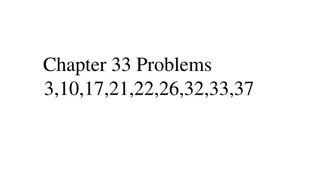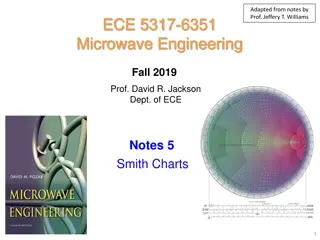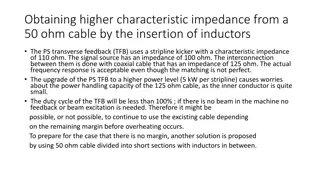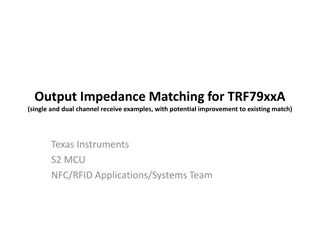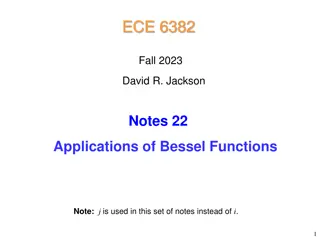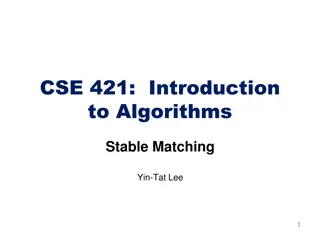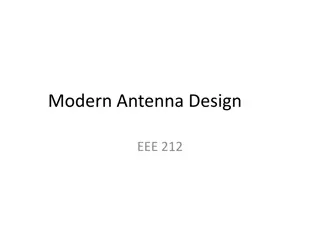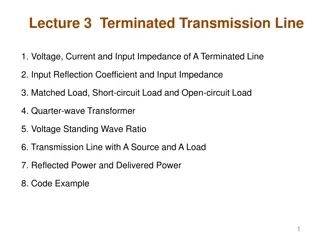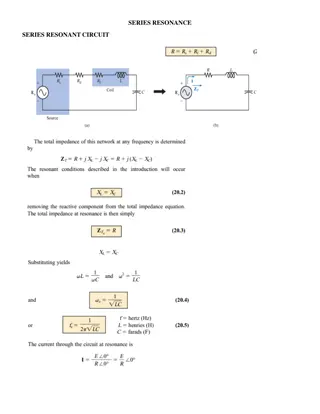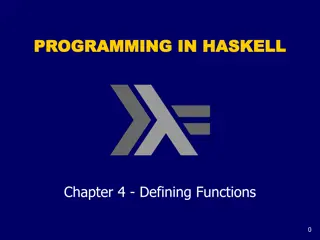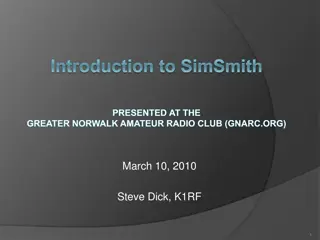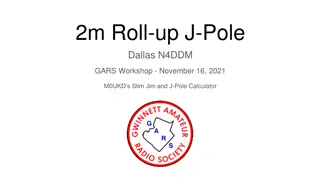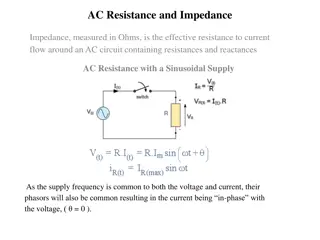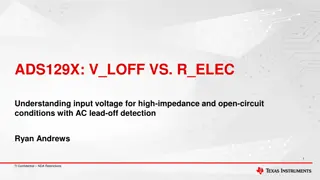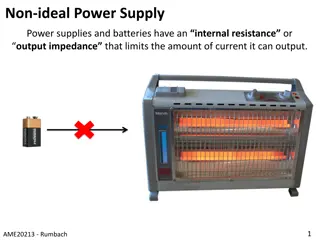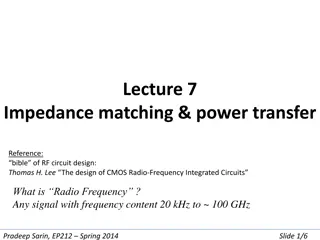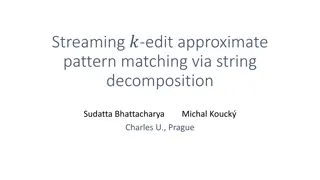Power Transfer and Impedance Matching in Circuits
Exploring the concept of maximizing power transfer between a source and load through impedance matching. Learn about complex conjugates, real and magnitude of complex numbers, average power in circuits, and the importance of minimizing reflected power. Discover how incident, reflected, and delivered
4 views • 33 slides
AC Circuit Problems and Solutions
Explore various problems related to AC circuits, including calculations of current, voltage, reactance, impedance, and phase angles. Understand how to determine readings on ammeters and voltmeters, analyze inductor and capacitor interactions, and solve for circuit impedance with different components
0 views • 12 slides
Smith Charts in Microwave Engineering
Explore the concepts of Smith Charts in microwave engineering, focusing on the Generalized Reflection Coefficient, Complex Plane representation, Z-Chart analysis, and equation derivations for circles in the Z-Plane. Learn how to interpret impedance transformations and visualize impedance matching us
1 views • 29 slides
Feedback Amplifiers in Electronic Circuits
Feedback amplifiers play a crucial role in electronic circuits by providing mechanisms for controlling gain, stability, and overall performance. There are two basic types of feedback - positive and negative, each offering distinct advantages. The four ways of connecting feedback signals involve volt
2 views • 18 slides
Increasing Impedance with Inductors in Transmission Lines
The concept of increasing impedance in a transmission line using inductors is explored in this technical discussion. The use of inductors to raise the characteristic impedance of a cable is illustrated, along with considerations for cable division and filter types. The benefits of Chebyshev filters
0 views • 15 slides
Achieving Impedance Matching for TRF79xxA Single Receive Channel Using L Network: Calculations and Simulation
This content discusses the process of achieving impedance matching for a single receive channel in TRF79xxA devices, which operate with a 50-ohm antenna. The calculations involve determining the Q values of the legs, calculating reactances, and deriving the required values for L and C components. Si
1 views • 19 slides
Enhancing Matching Gift Strategies for Nonprofits
Explore a comprehensive roadmap for maximizing matching gift opportunities provided by Double the Donation. This presentation covers important steps such as determining donor information, evaluating revenue, and setting timelines for success. Learn how to identify responsible departments and individ
0 views • 10 slides
Analysis of Impedance in Conducting Materials
In these notes, the impedance of a round wire made of conducting material is examined in detail. The analysis includes the consideration of the wire's conductivity, current flow, and impedance per unit length. Various integration identities and equations are derived to understand the behavior of the
0 views • 45 slides
Impedance and HOM Heating in IR Region of MDI for CEPC
This study explores impedance and Higher Order Mode (HOM) heating in the Infrared (IR) region of MDI for the Circular Electron Positron Collider (CEPC). It discusses beam parameters, structure, layout of the vacuum chamber, and power deposition for different IR pipe models in detail. Additionally, i
0 views • 33 slides
Tuning and Matching of 1 and 2 Loops Antenna
The aim of the project is to match the impedance of the circuit to 50 ohms at the resonance frequency of 14.8 MHz. The process involves calculating the impedance, working at low frequencies to determine key parameters, calculating capacitors, determining Q, and finally calculating tuning and matchin
0 views • 25 slides
Graph Pattern Matching Challenges and Solutions
Graph pattern matching in social networks presents challenges such as costly queries, excessive results, and query focus issues. The complexity of top-k and diversified pattern matching problems requires heuristic algorithms for efficient solutions. Finding best candidates for project roles involves
0 views • 19 slides
Matching Keys in Database Systems
Matching keys play a crucial role in identifying the same real-world entities in database systems. They specify which attributes to compare and how to compare them, helping minimize redundancy and improve data accuracy. This summary discusses relative candidate keys, minimal matching keys, and relia
0 views • 13 slides
Stable Matching Problem and Gale-Shapley Algorithm Overview
The content provides information on the stable matching problem and the Gale-Shapley algorithm. It covers the definition of stable matching, the workings of the Gale-Shapley algorithm, tips for algorithm implementation, and common questions related to the topic. The content also includes a summary o
0 views • 16 slides
Discussion on Isolating Flanges in SPS Impedance Model
Discussing the installation and impact of insulating flanges in the SPS, particularly on eddy currents and resonance effects. The presence of isolated flanges to prevent eddy currents in grounding loops is analyzed, along with potential enhancements in dynamic effects. Preliminary measurements and m
2 views • 11 slides
Analysis of Bunch Lengthening in CEPC for Different Design Parameters
This study explores bunch lengthening in the Circular Electron Positron Collider (CEPC) for various design parameters, analyzing a 54 km design scheme, a 61 km design scheme, and a 100 km design scheme. The analysis includes the theoretical framework used, equations for bunch lengthening, and conclu
1 views • 15 slides
Overview of Impedance and Reflection Coefficient in 1-Port Network Transmission Lines
Explore the fundamentals of 1-port networks, focusing on impedance, admittance, and reflection coefficient. This lecture from EEE 212 delves into the review of these key concepts essential for modern antenna design. Drawing insights from HP/Agilent Application Note 95-1, the discussion provides a fo
0 views • 140 slides
Stable Matching and Orderly Markets in Various Allocation Systems
Exploring the concept of stable matching and orderly markets in different allocation systems such as medical residencies, law clerk placements, and college admissions. From theory to practice, the history of the National Residency Matching Program (NRMP) to centralized clearinghouses, the importance
0 views • 36 slides
Pattern Matching: Overview and Applications in Technology
In the study of pattern matching, text and patterns are analyzed to locate specific patterns within text data. This process involves various algorithms like Brute Force, Knuth-Morris-Pratt, and Boyer-Moore. The applications of pattern matching span across different fields such as text editing, web s
0 views • 59 slides
CHAPTER 7
Feedlines, also known as transmission lines, play a crucial role in connecting radios to antennas. They come in various types such as balanced and unbalanced feedlines, offering different impedance characteristics. A perfect feedline ensures efficient transmission of RF energy with minimal signal lo
3 views • 31 slides
Lecture 3 Terminated Transmission Line
The behavior of voltage, current, and input impedance in a terminated transmission line along with concepts related to input reflection coefficient, matched loads, and standing wave ratio. Explore the implications of load reflection coefficient and input impedance while looking towards the load. Lea
0 views • 37 slides
Impedance Basics and Circuit Analysis
In this informative content, you will learn about impedance in circuits, including its components, expression methods, series and parallel circuits, and examples of impedance calculations at specific frequencies. Explore topics on reactance, resistance, impedance transformation, and the Smith chart
0 views • 49 slides
Series Resonance in Circuits
In series resonance circuits, the quality factor (Q) plays a crucial role, influencing the circuit's behavior at different frequencies. The Q factor varies with frequency, affecting impedance and selectivity. Explore the concept of Q, impedance, and selectivity in series resonance circuits through d
0 views • 17 slides
Conditional Expressions and Pattern Matching
In Haskell programming, functions can be defined using conditional expressions, guarded equations, and pattern matching. Conditional expressions allow for defining functions based on conditions, while guarded equations provide an alternative approach to conditionals. Pattern matching offers a clear
0 views • 22 slides
Introduction to SimSmith - A Smith Chart Program Enhancing RF Analysis
SimSmith is a versatile RF analysis tool developed by Ward Harriman, AE6TY, offering a range of features from impedance analysis to circuit simulations. It supports drag-and-drop functionality, real-time operation, and can handle complex networks with ease. Learn how to utilize antenna impedance fil
0 views • 12 slides
Ultimatch: Matching Counterfactuals in Your Way
Ultimatch by Thorsten Doherr explores the concept of matching counterfactuals in a customizable manner, utilizing methods such as score-based matching, distance-based matching, and the Hypersphere-Leeway Algorithm. The tool allows for precise matching on observables and offers options for various ty
0 views • 10 slides
Building 2m Roll-up J-Poles: Transmission Lines, Impedance Matching, and More
In this workshop, we will delve into the world of building 2m Roll-up J-Poles. Topics covered include understanding transmission lines (balanced and unbalanced), impedance matching techniques, velocity factor, and tools for simplifying complex calculations. Explore the versatility of Roll-up J-Poles
0 views • 17 slides
Maximizing Happiness Through Ice-Cream Matching Problem
The Ice-Cream Matching Problem involves finding a matching that maximizes the total happiness of children by assigning each child one serving of ice-cream in a different flavor based on their preferences. The problem is formulated as a linear programming model where decision variables represent the
0 views • 12 slides
Understanding AC Resistance, Impedance, and Inductive Reactance
Explore the concept of AC resistance, impedance, and inductive reactance in electrical circuits. Learn how to calculate current, power, and impedance in AC circuits along with phasor diagrams. Discover the relationship between voltages and currents in sinusoidal waveforms.
0 views • 18 slides
Understanding Input Voltage for High-Impedance Conditions with AC Lead-Off Detection
Explore the relationship between electrode impedance and input voltage under high-impedance and open-circuit conditions using ADS129X technology. This study delves into the impact of various impedances on voltage waveforms generated by AC lead-off detection methods. Dive into the nuances of lead-off
0 views • 10 slides
Understanding Non-Ideal Power Supplies: Internal Resistance and Impedance
Explore the concept of non-ideal power supplies and batteries, their internal resistance, and output impedance that determine the maximum current output. Learn about voltage droop, the relationship between power output and load resistance, and the significance of impedance matching for maximizing po
0 views • 4 slides
Understanding Two-Port Network Parameters and Impedance Relationships
Explore the concept of two-port networks, their parameters, and impedance relationships. Learn about the characterization of two-port networks, impedance and admittance parameters, and their significance in filter synthesis and network design.
0 views • 27 slides
Understanding Intermediate EM Waves Impedance Theory
Explore the concept of wave impedance in intermediate electromagnetic waves, covering topics like wave propagation direction, impedance calculation, transverse equivalent networks, and more.
0 views • 51 slides
RF Circuit Design and Impedance Matching Techniques
Learn about impedance matching, power transfer, resonant circuits, and the application of square waves in RF circuit design. Explore the modeling of coaxial cables and prepare for lab studies on cables and devices under test.
0 views • 6 slides
Understanding AC Power, Phasor Analysis, and Impedance in Electrical Circuits
Dive into the world of AC power, phasor analysis, and impedance in electrical circuits. Learn about phasors, RMS values, impedance effects of resistors, inductors, and capacitors, as well as complex power concepts like apparent power and power factor.
0 views • 9 slides
Dynamic Sparse Channel Reconstruction through Matching Pursuit
Learn about the Structured Matching Pursuit method for reconstructing dynamic sparse channels efficiently utilizing compressive sensing algorithms such as Orthogonal Matching Pursuit (OMP) and Compressive Sampling Matching Pursuit (CoSaMP). Explore the system model, temporal correlation of dynamic c
0 views • 14 slides
Impedance Measurement Guide for NanoVNA Connect Users
Learn how to make impedance measurements using the NanoVNA Connect tool with detailed steps and visuals. Covering calibration, retrieving measurements, making impedance measurements in various configurations, and examining scattering parameters in SimSmith.
0 views • 10 slides
Field-Effect Transistors: FETs vs. BJTs Overview
Explore the similarities and differences between Field-Effect Transistors (FETs) and Bipolar Junction Transistors (BJTs) in the context of amplifiers, switching devices, and impedance matching circuits. Learn about the unique characteristics of FETs being voltage-controlled devices with high input i
0 views • 24 slides
Advanced Pattern Matching Techniques for Efficient Data Streaming
Explore the cutting-edge methods of pattern matching in data streaming, including approximate pattern matching and string decomposition, designed by experts in the field. Discover algorithms that optimize space and time efficiency while swiftly identifying patterns amidst data streams. Dive into the
0 views • 10 slides
Advanced Data Mining Techniques in Online Algorithms, Bipartite Matching, and Graph Matching
Explore advanced data mining concepts such as online algorithms, bipartite matching, and graph matching. Learn about different matching strategies, optimal solutions, and algorithms for bipartite graphs. Discover the process of online graph matching and its applications in real-world scenarios like
0 views • 28 slides
Interconnect Modeling with Lumped Elements: Basics and Impedance Fundamentals
Explore the fundamentals of interconnect modeling using lumped elements in digital system design, covering modeling techniques, impedance characteristics of resistors, capacitors, and inductors, and understanding the importance of impedance in system analysis. Enhance your knowledge of circuit model
0 views • 26 slides

